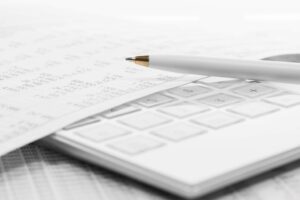
Product costs are costs that are incurred to create a product that is intended for sale to customers. Product costs include direct material (DM), direct labor (DL), and manufacturing overhead period costs (MOH). While their bifurcation is important to reveal gross and net margins, it also assists in cost analysis and control. Management can identify cost overrun areas by periodically analyzing both product costs and period costs. This can eventually help the entity take corrective action to lower costs and improve profitability. While overhead costs can be a type of period cost, not all period costs are considered overhead.

Product costs and period costs
Understanding the different of period costs allows businesses to analyze their financial performance and make informed decisions. By evaluating selling and marketing expenses, administrative expenses, and research and development costs, organizations can gain insights into their profitability and allocate resources effectively. Examples of product costs are direct materials, direct labor, and allocated factory overhead.
Selling expenses
- Now let’s look at a hypothetical example of costs incurred by a company and see if such costs are period costs or product costs.
- If liability is short-term and due within one accounting period and is not directly tied to the production of a product or inventory costs, then it could be considered a period cost.
- Direct product costs consist of those which can be easily identified and traced back to the product, they include direct materials and direct labor.
- Shaun Conrad is a Certified Public Accountant and CPA exam expert with a passion for teaching.
- Explore our marketplace and find the perfect tool to streamline your processes today.
- The costs are not related to the production of inventory and are therefore expensed in the period incurred.
- They are the costs that are directly and indirectly related to producing an item.
In short, all costs that are not involved in the production of a product (product costs) are period costs. Period costs are also known as period expenses, time costs, capacity costs, and operating expenses. In order to keep your budget efficient, it is important to know how to report period costs, but unfortunately, there is no standard formula for calculating period costs. The standard costs that a business Budgeting for Nonprofits incurs that are not directly related to production operations or inventory costs but still must be added to their income statement are known as period costs. The product costs are sometime named as inventoriable costs because they are initially assigned to inventory and expensed only when the inventory is sold and revenue flows into the business. Period costs are systematically recorded in the income statement as expenses in the period they are incurred.
- A period cost is charged to expense on the income statement as soon as it is incurred.
- This comprehensive budgeting ensures that all aspects of the company’s financial obligations are anticipated and accounted for, allowing for a more robust financial plan.
- In addition, knowing and managing capacity costs provides a key advantage for companies looking to improve their financial decision-making processes.
- Such a treatment of period costs is in accordance with the accrual concept of financial accounting.
- For instance, a business may be able to deduct the full amount of certain administrative expenses, such as office supplies or non-depreciable equipment, in the year they are purchased.
Accounting for Period Costs

The preceding list of period costs should make it clear that most of the administrative costs of a business can be considered period costs. In FIFO costing, the costs in the beginning inventory are transferred out in a lump sum. FIFO costing does not mix costs from prior tenure (in beginning inventory) with a current period expense. To quickly identify if a recording transactions cost is a period cost or product cost, ask the question, “Is the cost directly or indirectly related to the production of products?
Difference Between Product Cost and Period Cost
Costs which are needed to produce a product are referred to as product costs, all other costs are known as period costs. When a company spends money on an advertising campaign, it debits advertising expense and credits cash. Understanding these costs is not just about recording numbers; it’s about grasping their broader implications on pricing strategies, budgeting, forecasting, and tax considerations. The significance of period costs extends beyond mere accounting entries to become a cornerstone in shaping business tactics and financial health. Many employees receive fringe benefits paid for by employers, such as payroll taxes, pension costs, and paid vacations.
- Period costs are systematically recorded in the income statement as expenses in the period they are incurred.
- If a product is unsold, the product costs will be reported as inventory on the balance sheet.
- For instance, a spike in rental expenses due to market changes would necessitate a reevaluation of pricing to ensure that the increased costs do not erode profit margins.
- Period costs are always recognized in profit or loss in the period in which they are incurred.
- Understanding the differences between historical (past), current (present), and pre-determined (future) expenses is important for successful financial planning.
Liabilities are normally things that are settled over time through the transfer of money, goods, or services. Liabilities can either be short-term obligations that are due within one year of a normal accounting period, or they can be long-term liabilities and are not due for more than one accounting period. By definition, period costs are costs that are incurred during one accounting period and are not tied to the production of a product or the inventory costs. If liability is short-term and due within one accounting period and is not directly tied to the production of a product or inventory costs, then it could be considered a period cost.


So, it is only for that accounting period that period costs will reduce the net income. In financial statements, period costs are recognized as expenses in the period they are incurred. The primary difference between a period cost and a product cost is in the timing of their expensing. Period costs are expensed in the period incurred while product costs are treated as inventory and do not become costs of goods sold until the product is sold. The integration of period costs into budgeting and forecasting is a sophisticated exercise that enhances the precision of financial planning. When preparing a budget, companies must estimate not only the variable costs that fluctuate with production levels but also the fixed period costs that remain constant regardless of output.
